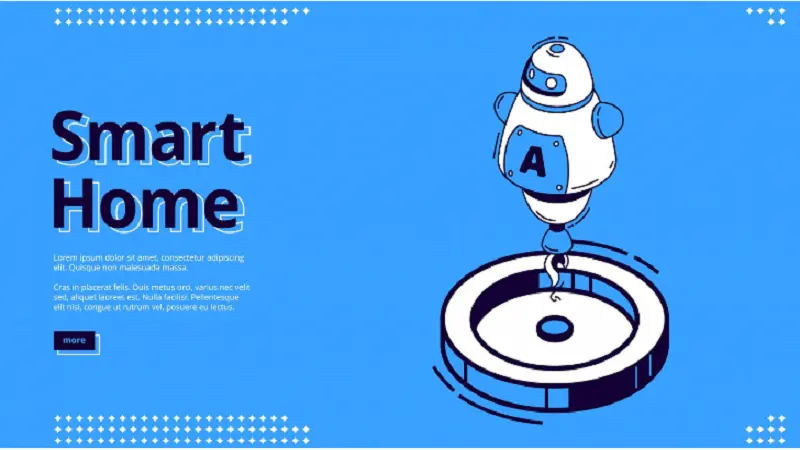The advent of artificial intelligence and robotics has ushered in a new era of possibilities for home automation. In this landscape, Meta’s Habitat Home Robot, Wheatley, stands out as a revolutionary development, promising to redefine the standards of in-home assistance. Named Wheatley, likely inspired by the classic sci-fi and robot narrative traditions, this AI-powered helper is designed to seamlessly integrate into daily life, performing a wide range of tasks while learning and adapting to the user’s needs. In partnership with SiliconANGLE for media outreach and tech insights, Meta’s ambitious vision for Wheatley is clear: to become a companion, assistant, and smart home innovator. Meta Habitat Home Robot Wheatley Siliconangle
1. Introduction to Meta Habitat and Wheatley
Meta Habitat is a pioneering AI and robotics initiative by Meta, the tech giant known for its groundbreaking work in virtual reality and AI development. The Habitat project focuses on creating highly intelligent and autonomous robotic systems capable of navigating complex, real-world environments. Wheatley, as the first iteration of the Meta Habitat Home Robot, exemplifies this vision, marking Meta’s entrance into a competitive field dominated by players like Amazon’s Astro and Google’s Nest ecosystem.
What Makes Wheatley Unique?
Wheatley is not just another robot—it represents an integrated approach to home automation, merging Meta’s expertise in AI, machine learning, and robotics. Powered by Habitat’s virtual environment training platform, Wheatley is designed to learn quickly, adapting to various home layouts, user preferences, and even complex human interactions. In a market where most home robots are limited to simple tasks like vacuuming, Wheatley’s capabilities are expansive. Meta Habitat Home Robot Wheatley Siliconangle
2. Key Features of Wheatley
Wheatley is equipped with numerous features that distinguish it from conventional smart home assistants. Here’s a closer look at some of its standout attributes:
a. Advanced Navigation and Mobility
Wheatley leverages Habitat’s highly detailed, simulated environments to learn complex navigation skills before being deployed into homes. This ability to pre-train in diverse environments enables Wheatley to move seamlessly through any layout. By integrating spatial sensors and advanced SLAM (Simultaneous Localization and Mapping) technology, it can navigate around furniture, stairs, and even small obstacles.
b. Object Recognition and Manipulation
Thanks to Meta’s advancements in computer vision, Wheatley can recognize and interact with various household items. From identifying a cup on a counter to placing items on shelves, Wheatley can handle small tasks, helping organize clutter or reminding users to put away misplaced items.
c. Personalized Learning and Adaptation
Wheatley’s AI is designed to learn and adapt to the user’s specific needs and routines. Over time, it observes patterns and preferences, creating a personalized profile that allows it to anticipate actions. For example, if you typically brew coffee every morning, Wheatley might begin turning on the coffee machine automatically, or remind you if you’re running low on coffee beans.
d. Seamless Integration with Other Smart Devices
One of Wheatley’s most anticipated features is its seamless integration with other smart home devices. From thermostats and lights to security cameras and entertainment systems, Wheatley is designed to function as a central hub, allowing users to control all connected devices through a single interface. Meta Habitat Home Robot Wheatley Siliconangle
e. Voice and Gesture Interaction
With natural language processing (NLP) capabilities and gesture recognition, Wheatley enables users to interact with it using spoken commands or simple gestures. This multi-modal interaction system aims to make communication with Wheatley feel more intuitive, breaking down barriers often associated with using advanced technology.
3. Meta’s Vision and the Role of SiliconANGLE
Meta’s collaboration with SiliconANGLE aims to bring broader visibility to the potential of Habitat’s advanced robotics. SiliconANGLE, known for its in-depth tech insights and influential media reach, provides valuable exposure, fostering public interest and acceptance. By leveraging SiliconANGLE’s media expertise, Meta is emphasizing its commitment to creating accessible, user-friendly technology that enhances everyday living.
4. The Potential Impact of Wheatley on Modern Households
The integration of Wheatley into a household brings multiple potential benefits, from increased convenience to enhanced safety and even potential health monitoring. Here are a few ways Wheatley could positively influence homes:
a. Enhancing Daily Efficiency
By automating simple tasks and assisting in routine activities, Wheatley enables users to save valuable time. Whether it’s assisting with laundry organization, reminding users of their daily schedule, or even monitoring kids’ homework time, Wheatley acts as a digital concierge, handling the small details that can accumulate into a time-consuming burden. Meta Habitat Home Robot Wheatley Siliconangle
b. Safety and Security Features
With integrated cameras and sensors, Wheatley can act as an additional layer of security. It can monitor the home for unusual activity, detect fire or gas leaks, and alert homeowners of potential dangers. Its security integration can complement existing systems, offering peace of mind for families and individuals alike.
c. Elderly and Special Needs Assistance
For elderly individuals or those with disabilities, Wheatley offers a helping hand, performing physical tasks that might be challenging. It can remind users to take medication, retrieve items, and assist with mobility within the home. This potential for aiding vulnerable groups could transform Wheatley from a luxury device to an essential support system.
d. Environmental Awareness and Energy Savings
With a focus on sustainability, Wheatley can monitor energy consumption and suggest energy-saving practices. For instance, if lights or appliances are left on, Wheatley can turn them off or remind the user, contributing to eco-friendly household practices.
5. Training in Habitat’s Virtual Environment
A critical component of Wheatley’s intelligence comes from the Habitat virtual environment, where the robot undergoes extensive training. Unlike traditional machine learning processes that rely on real-world interactions, Habitat enables robots to train in highly detailed simulated spaces, learning how to navigate and react to different scenarios. Meta Habitat Home Robot Wheatley Siliconangle
Why Virtual Training?
Training in a virtual environment is faster, safer, and more cost-effective. By simulating thousands of households, Wheatley can encounter a vast array of potential situations without the risks associated with physical testing. This approach allows Wheatley to enter the market with a higher level of preparedness, offering a polished and responsive experience from day one.
6. Ethical Considerations and Privacy
With an intelligent robot like Wheatley in the home, concerns about privacy and data security naturally arise. Meta has implemented rigorous privacy protocols, ensuring Wheatley operates with the utmost respect for user data. Wheatley’s data collection is minimal and designed to be as non-invasive as possible, with options for users to control or limit its access to personal information.
Addressing Privacy Concerns
Meta has assured users that Wheatley’s AI is compliant with privacy regulations, and data collected is anonymized and encrypted. Furthermore, users can opt out of specific data collection features and delete data stored by Wheatley. Meta’s commitment to transparency aims to build trust in a world increasingly concerned with digital privacy.
7. Wheatley’s Competitors and How It Stands Out
In the emerging market for home robots, Wheatley faces stiff competition from other tech giants. Google, Amazon, and various startups have introduced similar robots with capabilities aimed at simplifying home life. However, Wheatley sets itself apart with its advanced training, high level of personalization, and seamless integration into smart home ecosystems. Meta Habitat Home Robot Wheatley Siliconangle
How Wheatley Outpaces Competitors
- Enhanced Customization: Wheatley learns and adapts in ways few robots currently do, building a personalized experience that feels more natural and intuitive.
- Advanced Training and Environment Simulation: Thanks to Habitat, Wheatley’s training surpasses the standard, giving it an edge in adaptability.
- Broader Functionalities: Wheatley’s integration of numerous smart home devices and multi-tasking abilities make it more versatile than competitors focused on single functions, like cleaning or limited security.
8. Wheatley’s Future Potential and Meta’s Long-Term Vision
Meta envisions Wheatley as part of a broader network of AI-driven devices that will enhance daily living and improve overall life quality. By establishing a robust AI ecosystem, Meta aims to pioneer a future where AI assistants evolve with the user, becoming more capable over time and potentially spanning areas beyond simple home management.
9. Conclusion: Wheatley’s Role in the Future of Smart Living
As Meta’s first serious venture into home robotics, Wheatley embodies the potential of AI to enrich everyday life. With its sophisticated features, ethical considerations, and future-focused adaptability, Wheatley could redefine the boundaries of home automation, making the dream of a personal home assistant a reality for many. In collaboration with SiliconANGLE, Meta is also bridging the gap between tech innovators and the general public, ensuring that Wheatley’s story reaches a wide audience and garners the interest it deserves.
As we stand at the intersection of AI, robotics, and everyday life, Wheatley offers a glimpse into a world where technology adapts to us rather than the other way around. Meta Habitat Home Robot Wheatley Siliconangle






